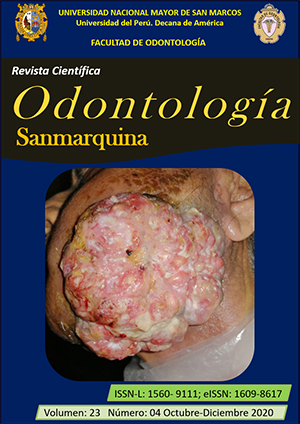National oral health policy in Brazil
DOI:
https://doi.org/10.15381/os.v23i4.19106Keywords:
Public health administration, Oral health, Unified health system, (source: MeSH NLM)Abstract
The Smiling Brazil (BS) program was created by the federal government of Brazil, as part of its Unified Health System, in 2004. This program provides tens of thousands of oral health teams in basic primary care, establishes care for medium complexity and promotes municipal policies for fluoridation of the water supply and prosthetic oral rehabilitation, through regional dental prosthesis laboratories, among other actions. The National Oral Health Policy (PNSB) and its BS program are recognized as responsible for increasing access to public health services. Approximately 15 years after the implementation of the PNSB, important advances can be observed: exponential increase in the coverage of oral health teams in basic care and a comprehensive health care approach. However, the accomplishments cannot hide the obstacles that still exist. The municipalization of the health system was carried out under the protection of democratization and the premise of empowerment of local officers in the discussion of a more convenient health model to offer services to users. But the way in which the Brazilian State organized and financed itself distorted the structure of the health care networks.
Downloads
Downloads
Published
Issue
Section
License
Copyright (c) 2020 Sylvio da Costa Junior, Ximena Concha Melgar, Fernando Neves Hugo

This work is licensed under a Creative Commons Attribution-NonCommercial-ShareAlike 4.0 International License.
AUTHORS RETAIN THEIR RIGHTS:
a. Authors retain their trade mark rights and patent, and also on any process or procedure described in the article.
b. Authors retain their right to share, copy, distribute, perform and publicly communicate their article (eg, to place their article in an institutional repository or publish it in a book), with an acknowledgment of its initial publication in the Odontología Sanmarquina.
c. Authors retain theirs right to make a subsequent publication of their work, to use the article or any part thereof (eg a compilation of his papers, lecture notes, thesis, or a book), always indicating the source of publication (the originator of the work, journal, volume, number and date).






